Most African American cities in Hawaii research summary. We used Saturday Night Science to analyze Hawaii’s most recent Census data to determine the blackest cities in Hawaii based on the percentage of Black residents. Here are the results of our analysis:
-
The city with the largest African American population in Hawaii is Schofield Barracks based on the most recent Census data.
-
Schofield Barracks is 16.37% Black.
-
The least African American city in Hawaii is Ewa Beach.
-
Ewa Beach is 0.0% Black.
-
Hawaii is 1.8% Black.
-
Hawaii is the 41st blackest state in the United States.
Table Of Contents: Top Ten | Methodology | Summary | Table
The Black community is one of the fastest-growing communities in America this decade.
Roughly 42 million people identifying as Black or African American live in the United States, making up 12% of the total population. According to the most recent American Community Survey, the Black population in Hawaii is 26,664 – at 1.8% of the total population of Hawaii.
The percentage growth of Blacks in America is the third largest percentage change for any race according to the Census’s race and ethnicity definition. Most scholars and historians agree that increasing diversity in America is a good thing.
We agree.
But how has the increase in the black population impacted Hawaii? Which cities and towns in Hawaii have seen the greatest increase in its Black population?
We broke down the most recent census data to determine the cities in Hawaii with the largest African American population in 2024:
Most African American Places In Hawaii
What’s the blackest city in Hawaii? The city with the largest Black population in Hawaii for 2024 is Schofield Barracks. See if Schofield Barracks ranked as one of the most african american places in America.
And if you already knew these places were Black, check out the best places to live in Hawaii or the most diverse places in Hawaii.
The 10 Blackest Cities In Hawaii For 2024
1. Schofield Barracks

/10
Population: 18,133
% African American: 16.37%
# Of African American Residents: 2,969
Percent Change Since 2010: 63.76%
More on Schofield Barracks: Data | Cost Of Living
2. Hickam Housing

/10
Population: 9,502
% African American: 8.93%
# Of African American Residents: 849
Percent Change Since 2010: 119.95%
More on Hickam Housing: Data | Cost Of Living
3. Makakilo
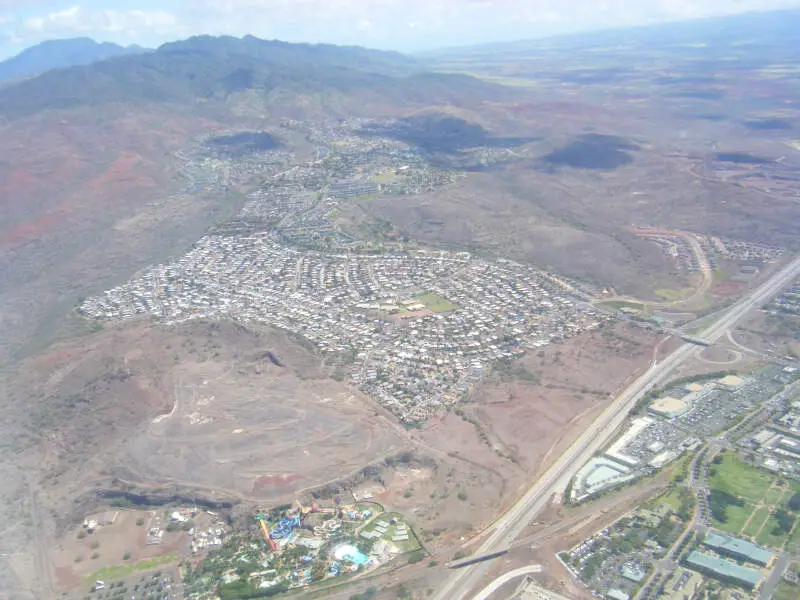
/10
Population: 21,055
% African American: 6.02%
# Of African American Residents: 1,268
Percent Change Since 2010: 85.92%
More on Makakilo: Data | Cost Of Living
4. Ocean Pointe
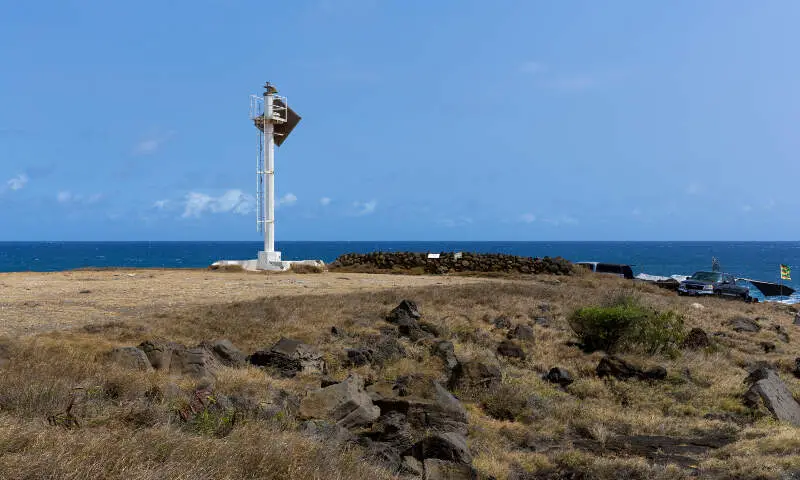
/10
Population: 16,173
% African American: 4.63%
# Of African American Residents: 749
Percent Change Since 2010: 36.43%
More on Ocean Pointe: Data | Cost Of Living
5. Makaha
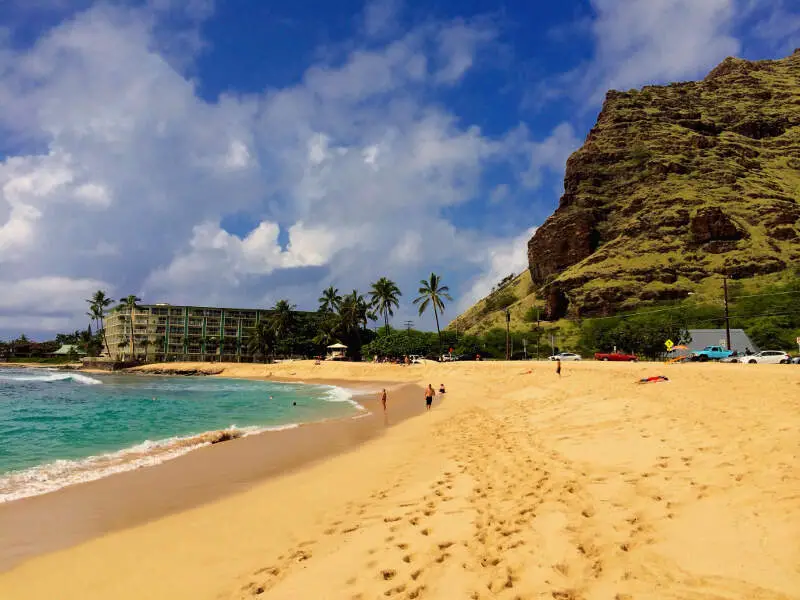
/10
Population: 10,042
% African American: 4.25%
# Of African American Residents: 427
Percent Change Since 2010: 349.47%
More on Makaha: Data | Cost Of Living
6. Maili
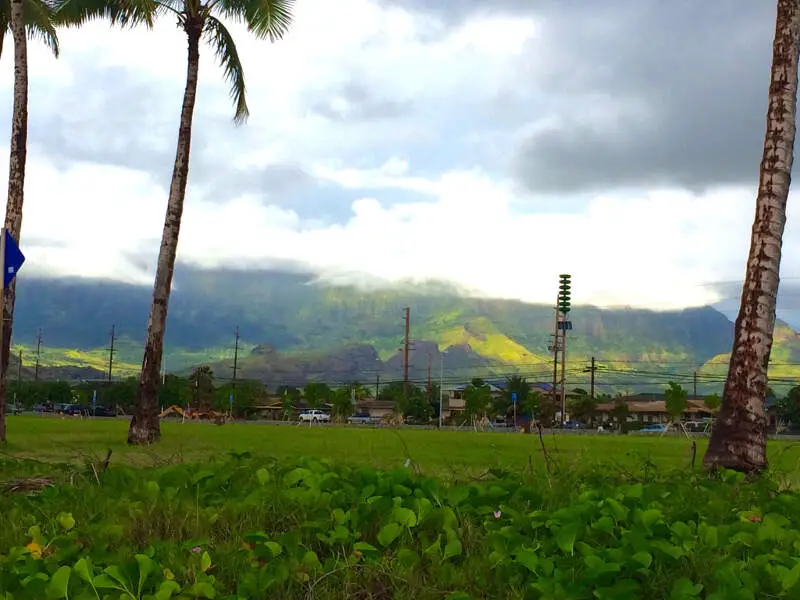
/10
Population: 12,114
% African American: 3.95%
# Of African American Residents: 479
Percent Change Since 2010: 112.89%
More on Maili: Data | Cost Of Living
7. Waimalu
/10
Population: 13,932
% African American: 3.71%
# Of African American Residents: 517
Percent Change Since 2010: -29.37%
More on Waimalu: Data | Cost Of Living
8. Ewa Gentry
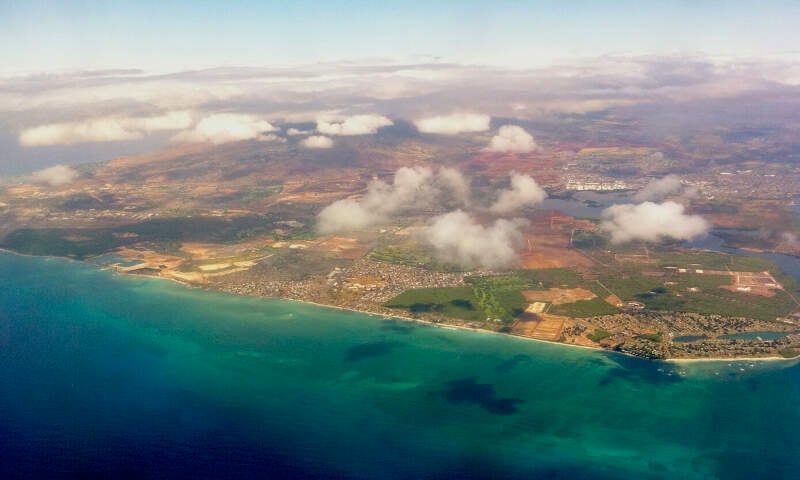
/10
Population: 27,198
% African American: 3.43%
# Of African American Residents: 932
Percent Change Since 2010: 0.0%
More on Ewa Gentry: Data | Cost Of Living
9. Waikele
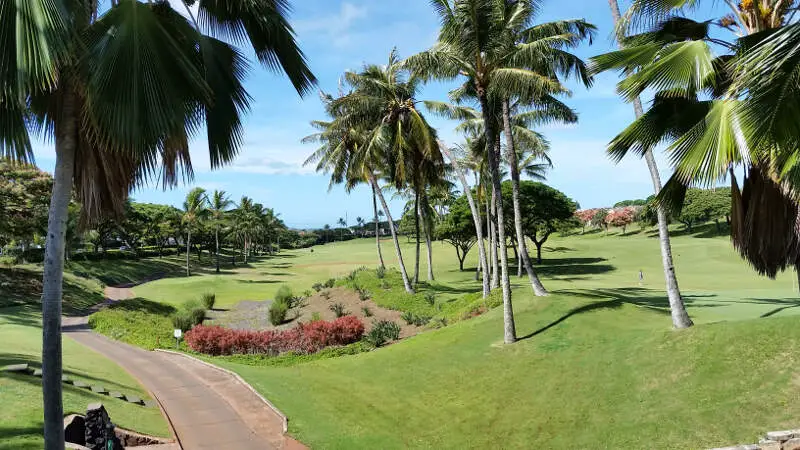
/10
Population: 7,551
% African American: 3.39%
# Of African American Residents: 256
Percent Change Since 2010: 139.25%
More on Waikele: Data | Cost Of Living
10. Mililani Mauka
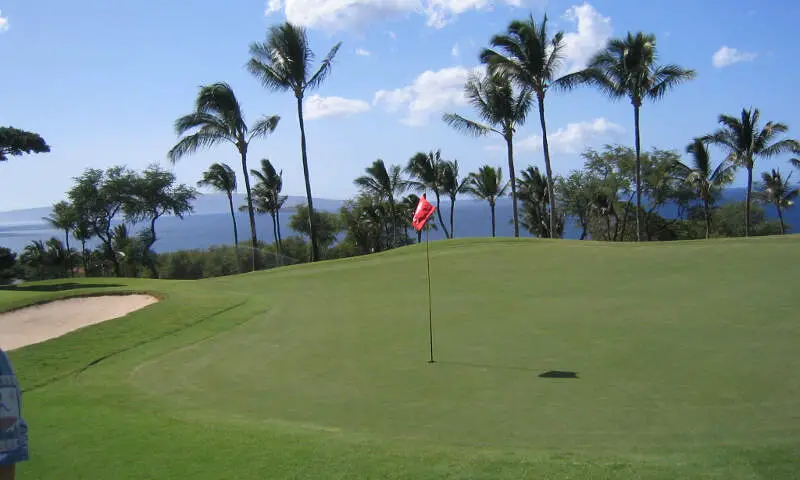
/10
Population: 21,546
% African American: 3.29%
# Of African American Residents: 708
Percent Change Since 2010: 91.87%
More on Mililani Mauka: Data | Cost Of Living
Methodology: How We Determined The Cities In Hawaii With The Largest Black Population For 2024
We still believe in the accuracy of data — especially from the Census. So that’s where we went to get the race breakdown across Hawaii.
That leads us to the Census’s most recently available data, the 2018-2022 American Community Survey data from the US Census.
Specifically, we looked at table B03002: Hispanic OR LATINO ORIGIN BY RACE. Here are the category names as defined by the Census:
- Hispanic or Latino
- White alone*
- Black or African American alone*
- American Indian and Alaska Native alone*
- Asian alone*
- Native Hawaiian and Other Pacific Islander alone*
- Some other race alone*
- Two or more races*
Our particular column of interest was the number of people who identified as Black or African American.
We limited our analysis to non-CDPs with a population greater than 5,000 people in Hawaii. That left us with 51 cities.
We then calculated the percentage of residents that are Black or African American. The percentages ranked from 16.4% to 0.0%.
Finally, we ranked each city based on the percentage of the Black population, with a higher score being more Black than a lower score. Schofield Barracks took the distinction of being the most Black, while Ewa Beach was the least African American city.
We updated this article for 2024. This is our tenth time ranking the cities in Hawaii with the largest African American population.
Read on for more information on how the cities in Hawaii ranked by population of African American residents or, for a more general take on diversity in America, head over to our ranking of the most diverse cities in America.
Summary: Black Populations Across Hawaii
If you’re looking for a breakdown of African American populations across Hawaii according to the most recent data, this is an accurate list.
The blackest cities in Hawaii are Schofield Barracks, Hickam Housing, Makakilo, Ocean Pointe, Makaha, Maili, Waimalu, Ewa Gentry, Waikele, and Mililani Mauka.
If you’re curious enough, here are the least African American places in Hawaii:
- Ewa Beach
- Haiku-Pauwela
- Kula
For more Hawaii reading, check out:
African American Population By City In Hawaii
| Rank | City | Population | African American Population | % African American |
|---|---|---|---|---|
| 1 | Schofield Barracks | 18,133 | 2,969 | 16.37% |
| 2 | Hickam Housing | 9,502 | 849 | 8.93% |
| 3 | Makakilo | 21,055 | 1,268 | 6.02% |
| 4 | Ocean Pointe | 16,173 | 749 | 4.63% |
| 5 | Makaha | 10,042 | 427 | 4.25% |
| 6 | Maili | 12,114 | 479 | 3.95% |
| 7 | Waimalu | 13,932 | 517 | 3.71% |
| 8 | Ewa Gentry | 27,198 | 932 | 3.43% |
| 9 | Waikele | 7,551 | 256 | 3.39% |
| 10 | Mililani Mauka | 21,546 | 708 | 3.29% |
| 11 | Mililani Town | 27,423 | 628 | 2.29% |
| 12 | Waipio Acres | 5,393 | 115 | 2.13% |
| 13 | Wahiawa | 17,400 | 370 | 2.13% |
| 14 | Kapolei | 22,701 | 472 | 2.08% |
| 15 | Waikoloa Village | 7,418 | 154 | 2.08% |
| 16 | West Loch Estate | 6,469 | 133 | 2.06% |
| 17 | Lihue | 8,649 | 169 | 1.95% |
| 18 | Aiea | 9,571 | 162 | 1.69% |
| 19 | Urban Honolulu | 348,547 | 5,874 | 1.69% |
| 20 | Waihee-Waiehu | 11,029 | 177 | 1.6% |
| 21 | Pearl City | 46,812 | 713 | 1.52% |
| 22 | Kahului | 27,233 | 360 | 1.32% |
| 23 | Kailua Cdp (Hawaii County) | 21,449 | 278 | 1.3% |
| 24 | Wailuku | 16,590 | 202 | 1.22% |
| 25 | Royal Kunia | 13,919 | 168 | 1.21% |
| 26 | Pukalani | 7,930 | 94 | 1.19% |
| 27 | Waianae | 13,749 | 146 | 1.06% |
| 28 | Halawa | 14,411 | 144 | 1.0% |
| 29 | Hawaiian Paradise Park | 13,041 | 126 | 0.97% |
| 30 | Wailea | 6,517 | 56 | 0.86% |
| 31 | Kihei | 22,247 | 188 | 0.85% |
| 32 | Ewa Villages | 6,550 | 51 | 0.78% |
| 33 | Hilo | 47,627 | 317 | 0.67% |
| 34 | East Honolulu | 49,491 | 323 | 0.65% |
| 35 | Nanakuli | 12,370 | 79 | 0.64% |
| 36 | Waipio | 11,138 | 70 | 0.63% |
| 37 | Kailua Cdp (Honolulu County) | 40,323 | 222 | 0.55% |
| 38 | Kaneohe | 35,493 | 182 | 0.51% |
| 39 | Waipahu | 39,873 | 178 | 0.45% |
| 40 | Kapaa | 10,846 | 48 | 0.44% |
| 41 | Napili-Honokowai | 6,779 | 27 | 0.4% |
| 42 | Laie | 5,411 | 20 | 0.37% |
| 43 | Makawao | 7,704 | 18 | 0.23% |
| 44 | Lahaina | 12,906 | 13 | 0.1% |
| 45 | Wailua Homesteads | 7,189 | 7 | 0.1% |
| 46 | Waimea Cdp (Hawaii County) | 10,458 | 3 | 0.03% |
| 47 | Ahuimanu | 9,177 | 1 | 0.01% |
| 48 | Waimanalo | 5,743 | 0 | 0.0% |
| 49 | Kula | 6,578 | 0 | 0.0% |
| 50 | Haiku-Pauwela | 9,245 | 0 | 0.0% |
| 51 | Ewa Beach | 15,167 | 0 | 0.0% |

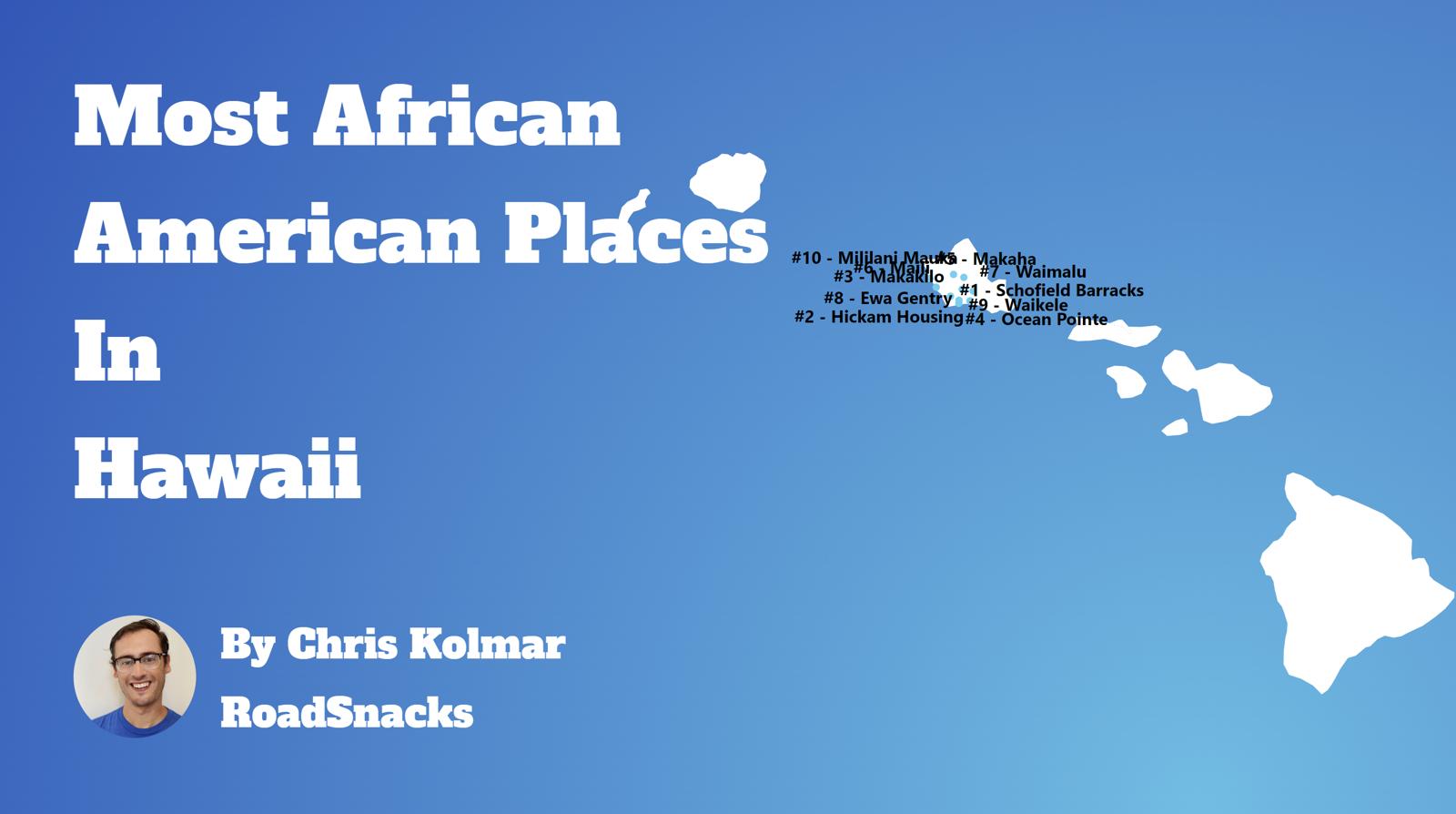
Schofield Barracks, Kaneohe Station and Hickam are military bases, not cities. The black population in the military, especially the army, is higher than the national average. In addition, service members are not considered residents of Hawaii and should not be included in our local demographic. Your numbers are skewed.